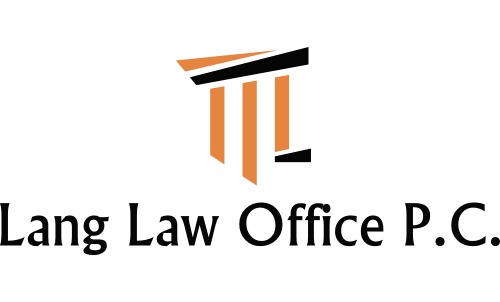The semiannual interest paid to bondholders on Dec. 31 is $450 ($10,000 maturity amount of bond × 9% coupon interest rate × 6/ 12 for semiannual payment). The $19 difference between the $469 interest expense and the $450 cash payment is the amount of the discount amortized. The entry on December 31 to record the interest payment using the https://turbo-tax.org/ effective interest method of amortizing interest is shown on the following page. The table above summarizes the key differences between notes payable and bonds payable. While notes payable are typically short-term or long-term debts borrowed from banks or individuals, bonds payable are long-term debts often traded in financial markets.
A T-bill pays no interest but is almost always sold at a discount to its par value or face value. So the investor pays less than full value upfront for the T-bill and gets the full value at the maturity date. The difference between the two numbers is the investor’s return on the investment. If you’re looking for accounting software that can help you better track your business expenses and better track notes payable, be sure to check out The Ascent’s accounting software reviews. Depending on how far in the future the maturity date is from the present date, bonds payable are often segmented into “Bonds payable, current portion” and “Bonds payable, non-current portion”. As part of the financing arrangement, the issuer of the bonds is obligated to pay periodic interest across the borrowing term and the principal amount on the date of maturity.
What are Bonds Payable?
Structured notes have complex principal protection that offers investors lower risk, but keep in mind that these notes are not risk-free. A convertible note is typically used by angel investors funding a business that does not have a clear company valuation. An early-stage investor may choose to avoid placing a value on the company in order to affect the terms under which later investors buy into the business. However, for financially sound companies, bond issuances represent a valuable method to raise capital while avoiding diluting equity interests as well as providing other benefits. You can verify a promissory note by checking with the Securities and Exchange Commission’s EDGAR database. Notes payable include terms agreed upon by both parties—the note’s payee and the note’s issuer—such as the principal, interest, maturity (payable date), and the signature of the issuer.
In fact, these bonds are considered to be among the safest investments in the world, and as a result, carry quite modest yields for investors, with short-term T-bills earning only the risk-free rate of return. Treasury bills, and notes are all investment products sold by the U.S. government to help finance its operations. The investor effectively loans money to the federal government and earns a profit in return.
- Treasury bills are short-term investments, with a maturity between a few weeks to a year from the time of purchase.
- Our experts love this top pick, which features a 0% intro APR for 15 months, an insane cash back rate of up to 5%, and all somehow for no annual fee.
- Notes payable is a formal agreement, or promissory note, between your business and a bank, financial institution, or other lender.
- Similarly, the journal entry on the date of maturity and principal repayment is essentially identical, since “Bonds Payable” is debited by $1 million while the “Cash” account is credited by $1 million.
Business owners record notes payable as “bank debt” or “long-term notes payable” on the current balance sheet. If a business’ accounts payable increase over a period of time, it means that the company has been purchasing https://online-accounting.net/ more services or goods on credit rather than with cash. In this article, we’ll explain exactly what the differences between notes payable and accounts payable are and provide you with real examples of each.
How to Use and Track Notes Payable
For example, let’s say Sarah borrows money from Paul in June, then lends money to Scott in July, along with a promissory note. Sarah designates that Scott’s payments go to Paul until Sarah’s loan from Paul is paid in full. T-notes can be used to generate funds to pay down debts, undertake new projects, improve infrastructure, and benefit the overall economy. The notes, which are sold in $100 increments, pay interest in six-month intervals and pay investors the note’s full face value upon maturity.
Write Off vs. Waiver: Financial Terms Explained
Additionally, John also agrees to pay Michelle a 15% interest rate every 2 months. Treasury bills can be purchased directly from the government on the website, TreasuryDirect.gov. TreasuryDirect is an online platform where individuals can buy government securities once opening an account. The buyer may enter a competitive bid, specifying a yield, or a non-competitive bid, agreeing to buy at the yield determined by auction. Savings bonds have not been printed on paper since 2012, and they are no longer sold at banks or post offices. Today, savings bonds can only be purchased online through the TreasuryDirect website.
Notes with Tax Benefits
When a business owner needs to raise money for their business, they can turn to notes payable for funding. Capital raised from selling notes can improve a business’s financial stability. The three distinctions are largely arbitrary, based on how far in the future each debt will mature. The same general concept is true when determining whether a debt is a bond or a note payable. In many cases, a company may be restricted from paying dividends or performing stock buybacks until the promissory note has been repaid.
Maturity of Interest Payment Journal Entry (Debit, Credit)
They can provide investors who are willing to accept the risk with a reliable return, but investors should be on the lookout for scams in this arena. Notes payable is a liability that arises when a business borrows money and signs a written agreement with a lender to pay back the borrowed amount of money with interest at a certain date in the future. If their accounts payable decrease, they’ve been paying off their previous debts https://www.wave-accounting.net/ more quickly than they’re purchasing new items with credit. Effective accounts payable management is a crucial part of managing a company’s cash flow. The items purchased and booked under accounts payable are typically those that are needed regularly to fulfill normal business operations, such as inventory and utilities. The U.S. Treasury bill, or T-bill, is a short-term investment, by definition maturing in one year or less.
Examples of Notes Payable
Notes payable are written agreements (promissory notes) in which one party agrees to pay the other party a certain amount of cash. A note is a debt security obligating repayment of a loan, at a predetermined interest rate, within a defined time frame. Notes are similar to bonds but typically have an earlier maturity date than other debt securities, such as bonds. For example, a note might pay an interest rate of 2% per year and mature in one year or less.



